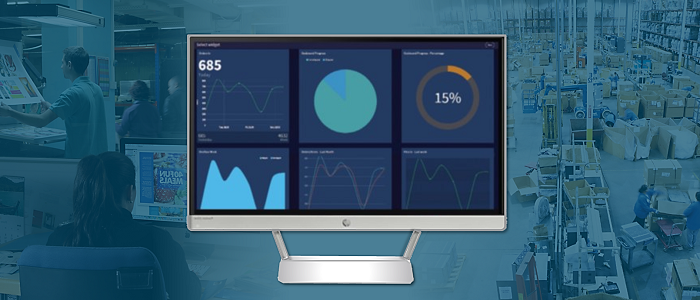
Is your print business ready for Industry 4.0?
Industry 4.0 has been the topic of the decade, but now, more than ever, we’re seeing the competitive gap widen between those that invest and those that lag behind. This is based on both internal and external research.
Internally, the HP PrintOSx team has conducted an automation maturity model assessment, providing the beta group a benchmark of their current production efficiency (measured in average time per job) compared to the average HP Indigo customer. In addition to this, they were provided a calculation of their potential savings per year by automating certain tasks. While the results are too small to share broadly, you can request an assessment of your own by emailing GSBsolutions@hp.com. This exercise exposed three key insights:
- True costs are hidden. Most print manufacturers haven’t calculated the true cost (time & labor) of each task in their production process, hiding their potential gains and current inefficiencies. (Side note: Watch our webinar hyperdrive your business performance to learn about bottlenecks and hidden costs.)
- Automation improves efficiencies. Those with greater automation reported less time on average per job, resulting in faster turnaround times and more effective labor (higher ratio of jobs per employee).
- The gap is widening. Those with high levels of automation, saw significant improvements and benefits than those with partial or no automation. The more end-to-end your automation is, the greater your competitive advantage appeared to be.
“The competitive gap is widening and correlated with the adoption of automation.”
Mind the gap
This widening gap between automated innovators and slow adopters, was not only seen in our internal research, but also in external research with Keypoint Intelligence – Infotrends. Using data from their 2019 software investment outlook reports, Keypoint highlighted this workflow gap in their ROI report of automated onboarding. In which, Keypoint reported around 1/3rd of print service providers had some automation for job tracking, batching, and pre-flighting. However, less than 10% had any automation for online job creation, imposition, and shipping preparation. This lack of end-to-end automation is driving the competitive divide, and the performance gains are starting to show.

Automation is a competitive advantage for print manufacturers. 1/3rd have partial automation, but less than 10% have end-to-end automation.
The advantage –a competitive edge and savings
Keypoint Intelligence estimates a potential savings of 17 minutes per job in file retrieval alone, saving at least $17,000 annually in labor costs, not to mention improving turnaround times. Now imagine what the savings could be from each step in your production process from file corrections, to scheduling, to reprints and more. Whether you’re ready for it or not, the print industry is changing. Big Data, the cloud, and horizontal and vertical system integration are three key drivers increasing the level of digitization and integration in the print industry today2. It’s also driven from the rising trends of web-to-print, localization, print-on-demand, data-driven decision making, industry automation, and more. Many of these we discuss in our latest webinar Top Trends of 2025. HP Site Flow and its suite of cloud-based solutions can help automate your workflow end-to-end from order submission to production to shipping. It can empower your business with data and insights needed to alleviate bottlenecks and optimize your production efficiency. No matter the industry or size of your print shop, print manufacturing site, or print business, HP Site Flow can help. To see how HP Site Flow works or to learn more about its competitive edge, click the “contact us” button.
Sources:
1) PCW. Strategy+Business magazine. May 9, 2016. Issue 83. A Strategiest’s guide to Industry 4.0 by Reinhard Geissbauer, Jesper Vedso, and Stefan Schrauf. https://www.strategy-business.com/article/A-Strategists-Guide-to-Industry-4.0?gko=a2260.
2) BCG. Embracing Industry 4.0 and Rediscovering Growth by Daniel Kupper. Sourced on Sept. 1, 2020. https://www.bcg.com/capabilities/operations/embracing-industry-4.0-rediscovering-growth



